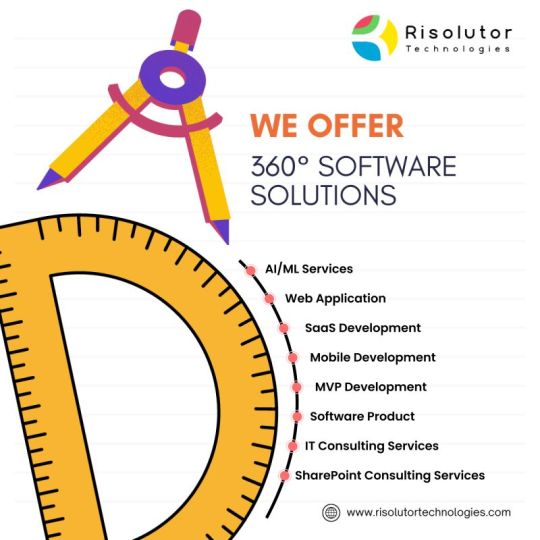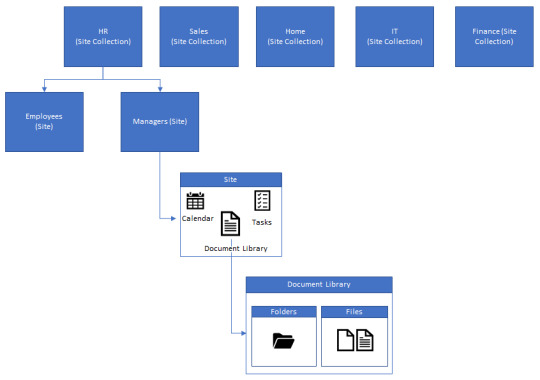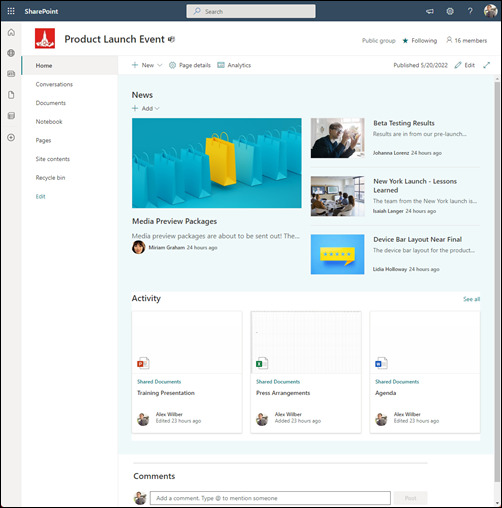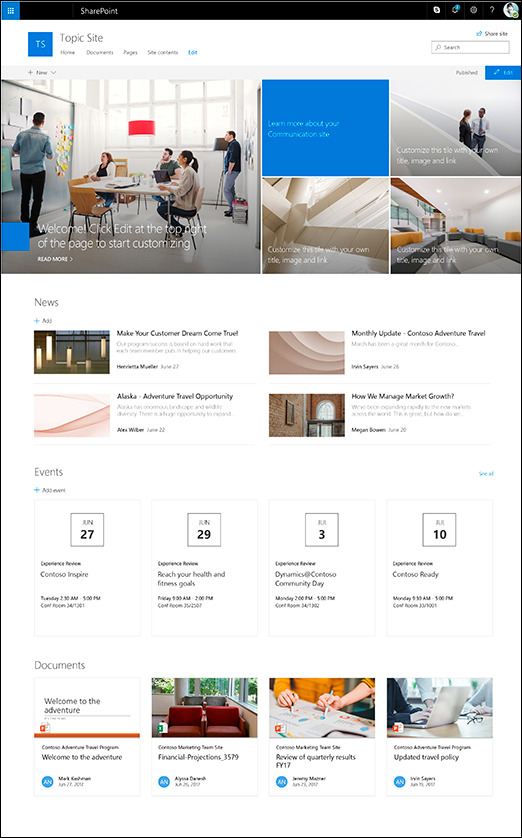#sharepoint application development service
Explore tagged Tumblr posts
Text

Hire SharePoint Developers | Expert Solutions for Your Projects
Build, modify, and manage your SharePoint systems effectively with the help of our experienced developers.
#hire Sharepoint developers#sharepoint development services#hire sharepoint consultant#sharepoint application development services#sharepoint application development service
0 notes
Text
#software#projects#tech#technology#it staff augmentation#web devlopment#app development#enterprise application development#enterprise app development company#enterprise application services#sharepoint development services#abby finereader engine#document management services#microsoft azure services
2 notes
·
View notes
Text
Organizations that require a dependable method to handle requests, monitor problems, and enhance internal communication must have a ticketing system. SharePoint, a popular platform for collaboration and document management, offers a flexible solution for building a custom ticketing system. This blog outlines the reasons why SharePoint is a good choice for this purpose and provides a detailed, step-by-step guide to implementing a ticketing system on the platform.
The blog begins by explaining the benefits of using SharePoint for ticket management. With its ability to centralize data, SharePoint allows businesses to keep track of issues from submission to resolution in one location. This improves organization, ensures better visibility, and makes it easier for teams to stay on top of requests. SharePoint also supports automation, which helps reduce manual effort in assigning tasks, sending updates, and closing tickets. By integrating with other tools like Power Automate, businesses can streamline workflows and create efficient processes that save time and reduce errors.
Next, the blog walks readers through the practical steps of setting up a ticketing system in SharePoint. This includes creating custom lists to capture essential ticket details such as issue type, priority, and status. The guide explains how to design automated workflows to route tickets to the right people, send notifications, and generate reports. A user-friendly interface is also discussed to ensure that employees or customers can easily submit and track their requests.
For businesses looking to develop a more robust solution, SharePoint app development offers a way to create mobile-friendly ticketing systems. With SharePoint application development, teams can manage tickets from anywhere, improving responsiveness and flexibility. Partnering with a skilled SharePoint development company ensures that the ticketing system is built according to the business’s specific needs and integrates well with other systems.
For organizations switching from legacy systems, SharePoint migration services can simplify the transition. These services help ensure that data is moved smoothly to SharePoint without loss, allowing businesses to maintain continuity and avoid disruptions.
By the end of the blog, readers will have a clear understanding of how to use SharePoint for creating a ticketing system that meets their needs. Whether through SharePoint development services or custom solutions, the guide provides practical steps to enhance issue management and improve overall operational efficiency.
#dynamics 365 sharepoint integration#sharepoint and salesforce integration#sharepoint app development#sharepoint application development#sharepoint consulting#sharepoint consulting services#sharepoint developers#sharepoint development company#sharepoint development service#sharepoint migration services#sharepoint services#sharepoint to sharepoint online migration#sharepoint expert consultant#sharepoint integration services#sharepoint intranet development#sharepoint migration consultant#sharepoint service provider#sharepoint solution provider
0 notes
Text
1 note
·
View note
Text
Custom SharePoint Development vs. Out-of-the-Box Solutions: Which Is Right for You?
Find out if a tailored SharePoint experience or a standard solution better suits your organization’s needs.

#custom SharePoint development#hire sharepoint developer#sharepoint development company in usa#sharepoint development services#sharepoint development#sharepoint application development services
0 notes
Text

#mobile application development#sharepoint consulting company#custom software development services#web application development services
0 notes
Text
Future-Proof Your Business with SharePoint App Development Services
Stay ahead of the competition with Katpro Technologies' SharePoint application development services. Our forward-thinking solutions are designed to future-proof your business by leveraging the latest SharePoint capabilities. From advanced customization to seamless integration, trust our expertise to drive innovation and growth. Explore how our tailored SharePoint solutions can propel your business toward success in a rapidly evolving digital landscape.

0 notes
Text
#sharepoint intranet#sharepoint onboarding app#uses for sharepoint#sharepoint design#sharepoint consulting services#sharepoint support#power pages sharepoint#sharepoint solutions#sharepoint application development
0 notes
Text
Are You Frustrated With SharePoint? We Can Help

Tired of dealing with SharePoint frustrations? Moreyeahs provides the support and solutions you need to conquer your SharePoint challenges. For more info, visit: https://www.moreyeahs.com/services/microsoft-services/sharepoint/
#sharepoint development services#microsoft sharepoint development services#sharepoint application development services#sharepoint services
0 notes
Text
Maximizing Efficiency: The Power of Enterprise Integration Services by ThinkAI
Enterprise Integration Services empowers organizations to seamlessly connect and optimize their systems, data, and processes. This transformative approach enhances productivity, accelerates decision-making, and fosters innovation, ultimately driving business success in an interconnected world. Unlock your full potential with enterprise integration.
https://thinkaicorp.com/eai-integration-services/
#Enterprise Integration Strategy#Enterprise Integration Services Irvine#best Enterprise Integration Services Irvine#ChatBot Service#Sharepoint Integration#Microsoft Sharepoint Integration Services#Sharepont Service Irvine#Mobile App Development#Android App development#data integration#Application and data integration#core technology services#Healthcare IT
0 notes
Text
Top 10 Microsoft SharePoint 365 Tips and Tricks 2023!

SharePoint Online is a great tool for creating intranets, document management and integrating your Microsoft 365 apps. Like everything though, Microsoft SharePoint tips and tricks are needed if you want to get setup quickly. To build a professional intranet or DMS you will need the help of a SharePoint developer. However, there are tasks that can be handled in-house and handy SharePoint tips and tricks to help you manage SharePoint. That’s why we have put together this list of useful SharePoint 365 tips and tricks to help you out.
SharePoint 365 Tips and Tricks 1: Understand the SharePoint Site Architecture

The first and most important thing to understand with SharePoint, is the architecture. It can be quite confusing to newbie’s how everything fits together with the other Microsoft 365 applications.
Overview
At a high-level, SharePoint works with a cascading structure. SharePoint sites are the top-level containers that house all content for a specific area (e.g a department like HR). These sites can contain subsites, document libraries, lists, web parts and pages.
Subsites – are used to house subsets of data for specific areas.
Document libraries – are used to store the sites documents.
Lists – are used to store data (like an online Excel spreadsheet). An example of a list could be a HR list of employee information.
Web parts – widgets that are used for functionality that can be embedded into a page.
Pages – are used to display content and information from lists and libraries.
Flat Structure vs Subsites
In the modern world of SharePoint, we have two possible ways of structuring SharePoint sites. Flat structure (recommended) and using subsites. Back in the old days of SharePoint, people used lots of subsites, sometimes going multiple levels deep. This caused SharePoint admins a nightmare to manage, as content was not easy to move and resulted in confusing navigation. So, flat structures were introduced. Creating all sites as ‘top-level’ sites and using hubsites to group them together (I will explain hubsites a bit later).
This is one of our favourite SharePoint 365 tips and tricks. People can often slip up by not knowing the recommended approach and it can be hard to rectify once you go down this path.
SharePoint 365 Tips and Tricks 2: Team site vs Communication site
Second on our list of Microsoft SharePoint tips and tricks, is the difference between SharePoint sites. In previous versions of SharePoint there were many site templates to choose from. Now in SharePoint 365 we just have two main ones. Team sites and communications sites.

When creating a SharePoint site, we can use the team site template. They are mainly used for collaboration within a specific team, for a closed group, or limited amount of people. For example, if you work in the HR team and want a place to store and collaborate on documents for your team, this template should be chosen. Team sites, can be ‘group connected’, which bundles a SharePoint site together with other Microsoft 365 tools, like Teams, Outlook and OneNote. Or you can build a standalone Team site.

These site templates are generally used for information that will be displayed either company-wide, or to a large audience. The are most often used for intranets, to showcase information or display content in a more visually friendly way.
SharePoint 365 Tips and Tricks 3: Understanding integration between SharePoint and Teams
Understanding how SharePoint works with Microsoft Teams is very important in the modern workplace. This can sometimes be overlooked as an important tip, when describing how SharePoint works.
Teams is now a key part of many workplaces. It is used to chat with colleagues, video conferencing and collaborating on document within groups or ‘Teams’. When it comes to document collaboration, what most people aren’t aware of is that Teams is not much more than a user interface for SharePoint. When you create a new ‘team’ in Teams, this creates a new SharePoint site in the backend. All the documents you add and share within your team is stored in the SharePoint document library. For each channel you create within your team, this creates a new folder in your SharePoint document library. Which is used to categorise the content.
Lists vs Libraries
A very simple one of our Microsoft SharePoint tips and tricks to explain, but also something a lot of SharePoint newbies might not understand. What is the difference between a SharePoint list and a document library? Essentially, lists store content and libraries store files. Lists act like Excel or a database, to store and manage data. That data can then be used to develop apps, or create dashboards and reports to visualise and manage the data. Document libraries are purely containers for your document and folder structure, similar to working in file explorer on your laptop.
Using metadata to categorise your content
When setting up a new SharePoint library or list, you need to think about what metadata will be used, based on what it will be used for and structure it accordingly. If you ask any SharePoint developer for SharePoint 365 tips and tricks, this will come up, as it is a very important aspect of SharePoint.
For document libraries, there are two main ways of structuring content. Using a metadata structure, or a folder structure.
Metadata structure – the document or data is tagged with metadata, that is used to categorise the content. The metadata is filtered or searched to find the file you are looking for. For example you could have a date column and a department column and you could filter each column by the month and department you need to bring up all relevant documents. This structure is generally used for large libraries that need to be organised by multiple categorisations.
Folder structure – works just like your Windows file explorer, you use folders and subfolders to store files and organise them.
Microsoft SharePoint Tips and Tricks 6: Hub sites, home site and root site
As you start to get into the more advanced options within SharePoint, you will surely come across these three terms for sites, that seem quite similar. Let us break down what each one means.
Hub sites – as mentioned in ‘SharePoint 365 tips and tricks 1’, sites are often arranged in a ‘flat structure’ instead of using subsites to organise your content. However, the downside to this is you can end up with hundreds of rouge sites, not properly associated to similar sites. This is where hub sites come in. These are sites that are used to associate similar sites, to represent a structure.
Home site – this is generally set on the SharePoint site that is used for your intranet home page. This site tells users that this is the entry for your SharePoint intranet.
Root site – this is the default site that is created when setting up SharePoint, it cannot be deleted and is the site that is displayed under yourcomanyname.sharepoint.com
Microsoft SharePoint Tips and Tricks 7: Turbo Charging SharePoint with the Power Platform
SharePoint comes as part of the Microsoft 365 suite of products, so it integrates really well with the tools available in M365. However, there are three other Microsoft tools that can really super charge the Microsoft SharePoint functionality.
Power Automate – used for creating workflows within SharePoint and other Microsoft products. These workflows can be used to process data stored in SharePoint lists and libraries, to create anything from document approvals to complex business flows.
Power Apps – used to create mobile, desktop and tablet apps, that can be used as a custom user interface to display data from SharePoint lists and libraries.
Power BI – used to display your data into user friendly reporting dashboards to properly visualise data in graphs and charts.
Microsoft SharePoint Tips and Tricks 8: Permission structure and file sharing
SharePoint permissions can be a hard concept to grasp, as the permissions can get very granular and detailed. In short, access can be set at any level in SharePoint and cascades down from granting access to a SharePoint site, right down to granting access on individual files and folders.
Understanding your Branding Limitations
Back in previous versions of SharePoint, design and branding options were almost unlimited. You could use custom code to completely tailor your SharePoint page designs into anything you wanted. Although this is still possible in SharePoint online, one of our Microsoft SharePoint tips and tricks is not use this option. In modern SharePoint, Microsoft do not recommend doing so and there are very strict branding guidelines that should be followed. This is to avoid security risks and governance nightmares. Companies should now use SharePoint themes and templates to apply branding.
Uitilise Co-authoring
Although technically co-authoring is a feature of the Microsoft Office tools. It is a great SharePoint 365 tip, as it can be used to its full potential within SharePoint. Co-authoring provides the ability for multiple team members to collaborate on files together at the same time. Making changes in real time and even starting chats within the document.
Getting a grasp on managing SharePoint yourself is important for all SharePoint users. However, sometimes you do need a SharePoint expert to help out with tasks.
To get a quote for professional SharePoint consulting, click below.
#business application#digital workplace#employee engagement#employee experience#internet#microsoft#microsoft 365#microsoft office#microsoft teams#sharepoint#sharepoint development services#sharepoint online#tech news#technology
1 note
·
View note
Text
Expert Power Platform Services | Navignite LLP

Looking to streamline your business processes with custom applications? With over 10 years of extensive experience, our agency specializes in delivering top-notch Power Apps services that transform the way you operate. We harness the full potential of the Microsoft Power Platform to create solutions that are tailored to your unique needs.
Our Services Include:
Custom Power Apps Development: Building bespoke applications to address your specific business challenges.
Workflow Automation with Power Automate: Enhancing efficiency through automated workflows and processes.
Integration with Microsoft Suite: Seamless connectivity with SharePoint, Dynamics 365, Power BI, and other Microsoft tools.
Third-Party Integrations: Expertise in integrating Xero, QuickBooks, MYOB, and other external systems.
Data Migration & Management: Secure and efficient data handling using tools like XRM Toolbox.
Maintenance & Support: Ongoing support to ensure your applications run smoothly and effectively.
Our decade-long experience includes working with technologies like Azure Functions, Custom Web Services, and SQL Server, ensuring that we deliver robust and scalable solutions.
Why Choose Us?
Proven Expertise: Over 10 years of experience in Microsoft Dynamics CRM and Power Platform.
Tailored Solutions: Customized services that align with your business goals.
Comprehensive Skill Set: Proficient in plugin development, workflow management, and client-side scripting.
Client-Centric Approach: Dedicated to improving your productivity and simplifying tasks.
Boost your productivity and drive innovation with our expert Power Apps solutions.
Contact us today to elevate your business to the next level!
#artificial intelligence#power platform#microsoft power apps#microsoft power platform#powerplatform#power platform developers#microsoft power platform developer#msft power platform#dynamics 365 platform
2 notes
·
View notes
Text
The Vital Role of Windows VPS Hosting Services in Today’s Digital World
In the fast-paced, ever-evolving digital landscape, businesses and individuals alike are in constant pursuit of reliability, speed, and efficiency. One technological marvel that has been increasingly pivotal in achieving these goals is Windows VPS (Virtual Private Server) hosting services. These services offer a robust and versatile solution that caters to a wide range of needs, from small business operations to large-scale enterprises. But what makes Windows VPS hosting services so indispensable? Let's dive in.
1. Unmatched Performance and Reliability
When it comes to performance, Windows VPS hosting stands out. Unlike shared hosting, where resources are distributed among multiple users, VPS hosting allocates dedicated resources to each user. This means faster load times, reduced downtime, and a smoother user experience. For businesses, this translates to enhanced customer satisfaction and improved SEO rankings.
2. Scalability at Its Best
One of the standout features of Windows VPS hosting is its scalability. Whether you're a startup experiencing rapid growth or an established business expanding its digital footprint, VPS hosting allows you to easily upgrade your resources as needed. This flexibility ensures that your hosting service grows with your business, eliminating the need for frequent and costly migrations.
3. Enhanced Security Measures
In an age where cyber threats are a constant concern, security is paramount. Windows VPS hosting provides a higher level of security compared to shared hosting. With isolated environments for each user, the risk of security breaches is significantly minimized. Additionally, many Windows VPS services come with advanced security features such as firewalls, regular backups, and DDoS protection, ensuring your data remains safe and secure.
4. Full Administrative Control
For those who require more control over their hosting environment, Windows VPS hosting offers full administrative access. This means you can customize your server settings, install preferred software, and manage your resources as you see fit. This level of control is particularly beneficial for developers and IT professionals who need a tailored hosting environment to meet specific project requirements.
5. Cost-Effective Solution
Despite its numerous advantages, Windows VPS hosting remains a cost-effective solution. It offers a middle ground between the affordability of shared hosting and the high performance of dedicated hosting. By only paying for the resources you need, you can optimize your budget without compromising on quality or performance.
6. Seamless Integration with Microsoft Products
For businesses heavily invested in the Microsoft ecosystem, Windows VPS hosting provides seamless integration with Microsoft products. Whether it's running applications like SQL Server, SharePoint, or other enterprise solutions, the compatibility and performance of Windows VPS hosting are unparalleled.
In conclusion, Windows VPS hosting services are a critical asset in the modern digital world. They offer unmatched performance, scalability, security, control, and cost-effectiveness, making them an ideal choice for businesses and individuals striving for success online. As the digital landscape continues to evolve, embracing Windows VPS hosting can provide the stability and reliability needed to stay ahead of the curve.
3 notes
·
View notes
Link
2 notes
·
View notes
Text
What is the Best Microsoft Development Tool for Your Project?
Introduction
It is crucial to choose the right development tools for any project. It can be overwhelming to figure out which tools are most suitable for your project based on the vast array of options available. We will provide you with insight and criteria in this blog post to help you make informed decisions and select the best Microsoft development tools for your projects.
1) An overview of Microsoft's development tools

Several tools are industry favourites when it comes to Microsoft development. Listed below are a few popular Microsoft development tools:
A. Microsoft Visual Studio
It provides comprehensive tools, debugging capabilities, and integration with a variety of languages and frameworks, making it the leading integrated development environment (IDE) for Windows platform development.
B. Visual Studio Code
It's particularly well-suited to web development because it's lightweight and versatile. Customization options are extensive, extensions are numerous, and debugging capabilities are powerful.
C. Windows Forms
Windows Forms is a powerful framework for building applications with graphical user interfaces (GUI). In addition to providing a rich set of design options and controls, it simplifies the creation of desktop applications.
D. ASP.NET
Building dynamic and scalable web applications is easy with ASP.NET. A variety of development models are available, including Web Forms and MVC (Model-View-Controller), and it integrates seamlessly with other Microsoft tools. For more information on why choose .Net framework for your next project, please refer to our detailed article.
E. Microsoft SharePoint
Designed to facilitate collaboration, document management, and content publishing, SharePoint facilitates enterprise development. A wide variety of tools and services are available for building intranets, websites, and business solutions with it.
F. Azure
In addition to infrastructure as a service (IaaS), Microsoft Azure also offers platform as a service (PaaS) and software as a service (SaaS) services. An application development, deployment, and management environment that is scalable and flexible.
Help Using Microsoft Tools with Expertise
Would you like expert assistance in maximizing the potential of Microsoft tools for your development project? For more information, please visit our comprehensive development services page.
2) When choosing development tools, consider the following factors

You should consider the following factors when selecting Microsoft development tools:
A) Purpose and Technology Stack
Understand your project's purpose and the technology stack needed. Different tools are optimized for different purposes, such as web development, desktop applications, and cloud computing.
B) Ease of Use and Learnability
Make sure the tools are easy to use and easy to learn. Your development team's familiarity and learning curve with the tools should be considered. An intuitive interface and extensive documentation can significantly improve productivity.
C) Desired Features and Performance Goals
Determine what features and performance goals your project requires. Make sure your selected tools provide the necessary functionality and are capable of meeting your project's scalability and performance needs.
D) Specialized Tools and Services
Microsoft offers specialized tools and services tailored to specific requirements. Office 365 development services provide integration with the productivity suite, while Power BI and Power Apps development services enable low-code and advanced data analytics.
E) Security and Regular Updates
Protect against vulnerabilities by prioritizing tools that emphasize security and offer regular updates.
F) Cost-Effectiveness
Take into account the cost-effectiveness of the tools based on the needs and budget of your project. Each tool should be evaluated based on its licensing model, support options, and long-term expenses.
3) Considerations and additional Microsoft development tools

As well as the core development tools, Microsoft Office 365 is also worth mentioning. Microsoft Office 365 offers a range of productivity and collaboration tools, including Word, Excel, Teams, and SharePoint, that seamlessly integrate with development workflows.
Considering the use of development tools requires consideration of costs and prioritizing regular updates. The use of the latest tools ensures data protection, improves overall performance, and mitigates the risk of security breaches.
Using Microsoft development tools like Visual Studio, Visual Studio Code, Windows Forms, ASP.NET, SharePoint Development, and Azure, you have access to a comprehensive ecosystem that supports various development requirements. Power BI development services , Power Apps development services , and Office 365 development services can help you improve your development process and deliver high-quality solutions.
In addition to improving productivity, choosing the right tools can ensure streamlined development and the development of robust, scalable, and efficient solutions. Choosing the right Microsoft development tool for your project requires evaluating your project needs, exploring the available tools, and making an informed choice.
Office 365 Development Services
Get the most out of Microsoft's productivity suite with our Office 365 development services. You can find more information on our website.
4) Conclusion

You can significantly impact the success of your project by choosing the right Microsoft development tools.The factors such as purpose, ease of use, desired features, security, and cost-effectiveness can help you make an informed decision and choose the tools that are most appropriate for your project.
In addition to handling web development and MVP development projects, i-Verve has extensive experience with multiple technology stacks.
2 notes
·
View notes
Text
10 Ways Custom SharePoint Development Boosts Team Productivity

In today’s fast-paced digital world, businesses need more than just basic tools to stay ahead. Productivity depends not only on individual performance but also on how efficiently teams can collaborate, communicate, and access the information they need, when they need it. That's where custom SharePoint development steps in.
Microsoft SharePoint has evolved far beyond a simple document library. With the right customization, it becomes a powerful productivity hub that helps teams work smarter, faster, and more efficiently. Below, we explore 10 ways custom SharePoint development services boost team productivity and transform the way businesses operate.
1. Centralized Information Access
One of the biggest time-wasters in any organization is searching for information scattered across emails, hard drives, and file-sharing platforms. With custom SharePoint development, you can create a centralized knowledge hub tailored to your team’s specific needs.
From project documents to training materials and client data, everything is stored in an organized, searchable structure, which reduces the time spent searching for information and improves decision-making speed.
2. Automated Workflows Save Hours
Manual, repetitive tasks drain productivity. Custom SharePoint development allows you to automate workflows across departments—from HR onboarding and leave approvals to IT support requests and invoice processing.
By integrating Power Automate and customizing logic-driven workflows, SharePoint eliminates bottlenecks, ensures consistency, and frees up your team to focus on more strategic work.
3. Tailored User Experience Increases Engagement
A standard SharePoint environment may not reflect your organization’s structure or brand identity. Through custom development, you can create a branded and intuitive user interface that’s aligned with how your team works.
Custom dashboards, menus, and layouts make navigation seamless, reduce the learning curve, and increase user adoption, essential for maximizing ROI from any digital platform.
4. Real-Time Collaboration Tools
SharePoint integrates tightly with Microsoft 365 apps like Teams, Outlook, OneDrive, and Excel, enabling real-time co-authoring and communication.
Custom SharePoint portals can include project-specific collaboration spaces, shared calendars, discussion boards, and live editing tools that help teams collaborate regardless of location or time zone—perfect for hybrid or remote work models.
5. Role-Based Access Enhances Security & Efficiency
Not all team members need access to the same files or data. SharePoint’s permission structure can be customized to provide role-based access controls.
This means employees see only what’s relevant to them, reducing clutter and the risk of data leaks. A cleaner, personalized workspace contributes directly to focus and efficiency.
6. Improved Task Management and Tracking
SharePoint can be customized to include task lists, Kanban boards, and progress trackers that integrate with project timelines and team dashboards.
Managers can assign, monitor, and update tasks in real-time, while team members get notifications and clear visibility of their responsibilities. This reduces misunderstandings, increases responsibility, and maintains unity among all parties.
7. Integration with Business Applications
Every organization uses a variety of software tools—CRM, ERP, HRMS, finance systems, and more. With custom development, SharePoint can act as a unified interface that integrates with third-party applications.
Rather than switching between platforms, your team can access all key systems and data from one place, saving time, reducing errors, and streamlining workflows.
8. Mobile Accessibility for On-the-Go Teams
In a mobile-first world, teams often need to collaborate outside the office. Custom SharePoint development ensures your intranet or portal is fully responsive and mobile-friendly.
Whether it’s field agents updating reports or executives accessing dashboards during travel, SharePoint ensures your team stays connected and productive from any device.
9. Faster Decision Making with Custom Dashboards
Custom SharePoint solutions can include real-time dashboards that visualize key metrics and performance indicators relevant to different departments.
Sales teams can track pipeline movement, HR can monitor employee engagement, and operations can oversee project timelines—all from one dashboard. Decisions based on data are made more quickly, accurately, and efficiently.
10. Streamlined Document Management and Compliance
Lost files, outdated versions, and access issues can cripple team efficiency. When properly configured, SharePoint document management features include audit trails, version control, check-in/check-out, and compliance tracking.
This ensures everyone is working on the most recent version, reduces risk, and keeps documentation aligned with industry regulations—all while improving workflow speed.
Why Customization Matters
While SharePoint offers powerful out-of-the-box features, true productivity gains come from tailoring the platform to your team’s specific needs. No two businesses are the same, and custom development ensures your SharePoint environment reflects your unique processes, goals, and workflows.
A customized SharePoint portal can:
Mirror your organizational hierarchy.
Reflect your branding and user roles.
Integrate the exact tools your team uses
Align with your strategic KPIs
Grow with your business.
Final Thoughts
Custom SharePoint development isn’t just a technical upgrade—it’s a strategic investment in your team’s productivity. You can make your workplace smarter, more connected, and more efficient by customizing SharePoint to meet your specific business needs.
Whether you’re managing a remote team, handling sensitive data, or trying to scale your operations, custom SharePoint solutions can help you reduce friction, improve performance, and drive business success.
#sharepoint development#sharepoint development services#sharepoint intranet development#sharepoint intranet portal development#sharepoint portal development#sharepoint portal solutions
0 notes